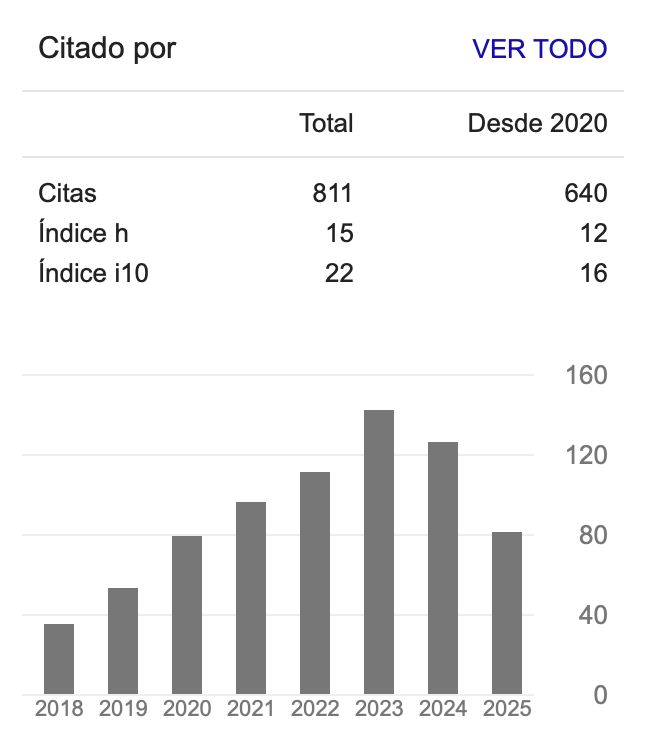Video Games as Immersive Simulations. The Case “Atrapados”, Transmedia Narrative and Research of Collective Intelligence
Keywords:
Video games, simulation, immersionAbstract
This text explores the concept simulation questioning some of its most widespread characterizations and argues why, contrary to these findings, all games are simulations. Subsequently, in order to specify what the particularity that differentiates the games from other forms of simulation is, Immersion category is proposed as one of the particular features of this medium. To explain this idea it is critically reviewed the work of some of the most prominent authors who have explored this concept, contrasting with different canonical definitions of play throughout the twentieth century and more recent reflections from the study of the game. Finally, the case of the video game “Atrapados” (Jaime Alejandro Rodríguez, 2014) is analized using the concepts of simulation and immersion to explain its functioning.
Downloads
References
Aarseth, E. (1997). Cybertext: Perspectives on Ergodic Literature. Baltimore, Maryland: The Johns Hopkins University Press.
Amador. Juan Carlos. Aprendizaje transmedia en la era de la convergencia cultural interactiva. En: Revista educación y ciudad no. 25. Julio-Diciembre de 2013.
Anthropy, A. (2012). Rise of the Videogame Zinisters. NY: Seven Stories Press.
Baudrillard, J. (1993). Cultura y Simulacro. Barcelona: Kairós.
Bogost, I. (2007). Persuasive Games. Cambridge, Londres: MIT Press.
Bogost, I. (2011). How to do Things with Videogames. London, University of Minnesota Press: Minneapolis.
Caillois, R. (1986). Los juegos y los hombres: la máscara y el vértigo. México: Fondo de Cultura Económica.
Dyer–Witheford, N. y de Peuter, G. (2009). Games of Empire: Global Capitalism and Video Games (Electronic Mediations). Minnesota: University of Minnesota Press.
Elwell, J Sage (2014) The transmediated self: Life between the digital and the analog. Convergence 2014 20: 233 originally published online 12 September 2013. http://con.sagepub.com/content/20/2/233
Flanagan, M. (2009). Critical Play: Radical Game Design. London: MIT Press.
Flanagan, M. y Nissenbaum, H. (2014). Values at Play in Digital Games. London: MIT Press.
Frasca, G. (2001). The Sims: Grandmothers are cooler than trolls. Game Studies.
Frasca, G. (2003). Simulation versus Narrative: Introduction to Ludology. En M. Wolf y B. Perron (Eds). Video Game Theory Reader. (pp. 221-236). NY: Routledge.
Frasca, G. (2004). Videogames of the Opressed: Critical Thinking, Education, Tolerance, and Other Trivial Issues. En N. Wardrip-Fruin y P. Harrigan, P. (Eds). First Person. New Media as Story, Performance and Game. (pp. 85-94). Cambridge, Londres: MIT Press.
Frasca, G. (2007). Play the message. Play, Game and Videogame Rhetoric. Tesis Doctoral. IT University of Copenhagen.
Fullerton, T. (2008). Game Design Workshop. A playcentric approach to creating innovative games. Ed Morgan Kaufmann.
Gere, C. (2008). Digital Cultures. London: Reaktion Books.
Grau, O. (2003). Virtual art from illusion to immersion. London: MIT Press.
Huizinga, J. (1968). Homo Ludens. España: Emece.
Juul, J. (2010). A casual revolution reinventing video games and their players. London: MIT Press.
Leonard, D. (2006). Not a Hater, Just Keepin´It Real. The importance of Race - and Gender Based Game Studies. Games and Culture, 1(1), 83- 88.
Lévy, Pierre (2004). Inteligencia colectiva. Por una antropología del ciberespacio. Washingtpon: Organización Panamericana de la salud. URL: http:// inteligenciacolectiva.bvsalud.org {última consulta: noviembre 2015]
Mikeal, R. y Stromer-Gallet, J. (2007). The Digital Dollhouse. Context and Social Norms in The Sims Online. Games and Culture, 2(4), 314-334.
MgGonigal, J. (2013). ¿Por qué los videojuegos pueden mejorar tu vida y cambiar el mundo? Argentina: Siglo XXI.
Molesworth, M. y Denegri-Knott, J. (2007). Digital Play and The Actualization of the consumer imagination. Games and Culture, 2(2), 114–133.
Murray, J. (1999). Hamlet en la holocubierta. El futuro de la narrativa en el ciberespacio. Barcelona: Paidós.
Pérez, O. (2010). Análisis de la significación del videojuego. Fundamentos teóricos del juego, el mundo narrativo y la enunciación interactiva como perspectivas de estudio del discurso. Tesis Doctoral. UPF.
Pérez, O. (2015). The Social Discourse of Video Games. Analysis Model and Case Study: GTA IV. Games And Culture, 5, 1 -23. Doi: 10.1177/1555412014565639
Piscitelli, Alejandro (2009). La cultura de los poslectores. http://www.filosofitis.com.ar/2009/04/27/la-cul tura-de-los-poslectores/. [último acceso: noviembre de 2015]
Rodríguez, Jaime Alejandro et al (2014). “Atrapados” el videojuego. Bogotá: Narratopedia. URL http:// atrapados.novanarratopedia.wikispaces.net/Videojuego-intro [último acceso: noviembre 2015)
Ryan, Marie-Laure (2004). La narración como realidad virtual. La inmersión y la interactividad en la literatura y en los medios electrónicos. Barcelona: Paidós.
Schaeffer, J-M. (2002): ¿Por qué la ficción? España: Ediciones Lengua de trapo.
Schmucker, K. (1999). A Taxonomy of Simulation Software. A work in progress. Apple Computer, Inc. Disponible en http://sites.fas.harvard.edu/~ext12366/ readings/schmucker.pdf
Scolari, C. (2004). Hacer Clic. Hacia una semiótica de las interacciones digitales. España: Gedisa.
Scolari. C. (2010). Interfaces para saber, interfaces para hacer. Las simulaciones digitales y las nuevas formas del conocimiento. En R. Aparici (Ed). Educomunicación: más allá del 2.0. (225-250). España: Gedisa.
Zimmerman, E. y Salen, K. (2004). Rules of Play: Game Design Fundamentals. London: The MIT Press.
Videojuegos reseñados
America’s Army (2002)
Atrapados (2014) Jaime Alejandro Rodríguez, disponible en: www.atrapados.co
Batman Arkham City. Rocksteady Studios (2011)
Call of Duty (2003–2014).
Canabalt (2009)
Candy Crush (2012)
Doom (1994)
Flappy Bird (2014)
GTA: San Andreas (2004)
Killzone 3 Pacman (1980)
Peace Maker (2007)
September 12th13 (Frasca 2003),
Temple Run (2011)
Tetris (1984)
The Sims (2000–2014)
Downloads
Published
-
Abstract524
-
PDF (Español)317
How to Cite
Issue
Section
License

This work is licensed under a Creative Commons Attribution-NonCommercial-ShareAlike 4.0 International License.






